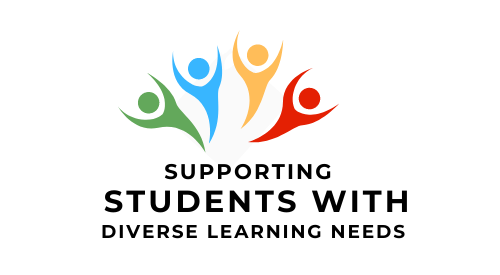- Students with oral expression difficulties find it difficult to express themselves in speech. Difficulties can range from students who speak very quietly or who struggle to find the right words to express themselves, to students with no speech at all.
- The causes of oral expression difficulties range widely, including head injury, hearing loss, neurological conditions, and illness.
- Oral expression difficulties are not related to intelligence. A student who is recovering from a stroke or who has a progressive neurological disorder, such as cerebral palsy, may speak slowly and struggle to find the right words. However, their intelligence can be completely intact.
- Students with severe speech or language problems may use a form of alternative or augmentative communication. This may include devices that produce voice output and/or written output. Electronic communication aids allow the user to use picture symbols, letters, and/or words, and phrases to create messages.
- Give the student enough time to speak. Resist the urge to finish sentences or offer words.
- If you do not understand what is being said, do not pretend to know. Tell the student you do not understand and allow him or her to repeat the communication.
- Consider providing alternatives to oral presentations or allow the student to present to the instructor, rather than a full class.
- Avoid calling on students randomly in class. Either choose students who have raised their hand or give students advanced notice that they may be required to give input on a specific topic. Students may prefer to prepare a written response that they, or another student can read aloud.
- Facilitate group activities to ensure that students with oral expression difficulties can play an active role.
- Provide a detailed course outline which outlines the learning outcomes, expectations, topics, reading list, and evaluation procedures.
- Consult with the student. Arrange to meet with the student in a confidential setting to discuss their learning needs and encourage open communication.
- Contact the Disability Services Office. If you have any concerns about accommodating a student in your class, contact the disability services office for advice and assistance.
- Adaptive technology.
- Modification of oral assignments.
- Speech Disorders occur when someone has difficulties producing language or has problems with his or her voice.
- ‘Disarthia’ is a motor speech disorder, resulting from impairment of the muscles used to produce speech. People with disarthia may have slow, slurred or mumbled speech that can be difficult to understand. It is associated with neurological disorders, including multiple sclerosis, ALS, and Parkinson’s Disease.
- Spoken Language Disorders occur when someone has difficulties with expressive language. This disorder can often co-occur with other disabilities, such as autism spectrum disorder, brain injury, learning disabilities or hearing loss.
- ‘Aphasia’ is a spoken language disorder caused by damage to the part of the brain that produces language. It can be caused by brain injury, strokes or progressive neurological disorders. People with aphasia may have difficulties coming up with the words they want to say or they may substitute the intended word with another word.
Case Study
Shahira was nervous about starting college because she had stuttered since she was a small child. She worked with a speech-language therapist at school and developed some strategies to reduce her stuttering, but she still avoided speaking in front of the class whenever possible. She was studying Business, so she knew there would be classes which involved some public speaking.
Sure enough, on the first day of class her instructor asked her name and she stuttered for five seconds before finally saying “Shahira”. She felt embarrassed, but determined that her stutter wouldn’t hold her back. She spoke to her instructor and explained that she was concerned about an upcoming presentation. The instructor reassured her that her presentation would be graded based on the content and her communication skills, such as body language and eye contact with the audience. She would not lose any marks as a result of her speech. She also suggested that Shahira register with disability services.
Shahira met with a Disability Advisor, providing documentation from her family doctor and speech-language therapist. After consultation with the Disability Advisor, Shahira received some in-class accommodations, including doing oral presentations with her instructor only rather than in front of the class. After her first two presentations in a separate room with her instructor, Shahira’s confidence grew. By the end of her first year, she was able to do her presentations in front of the class.

